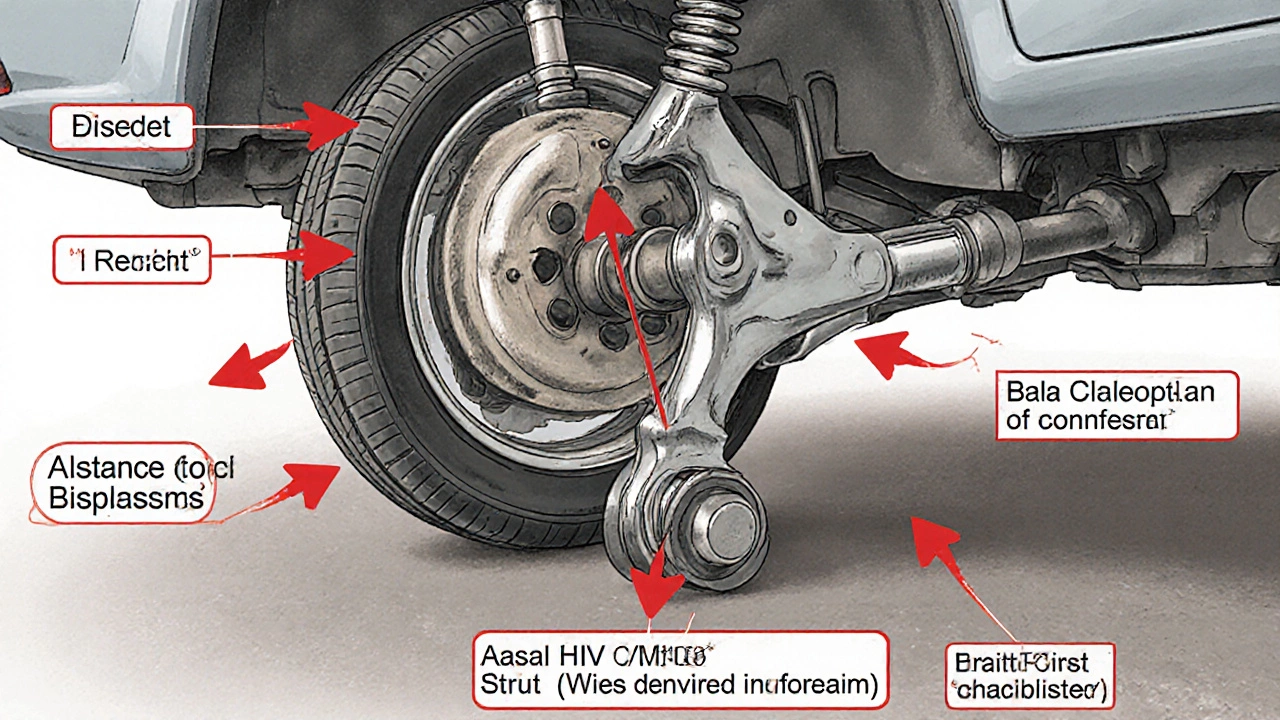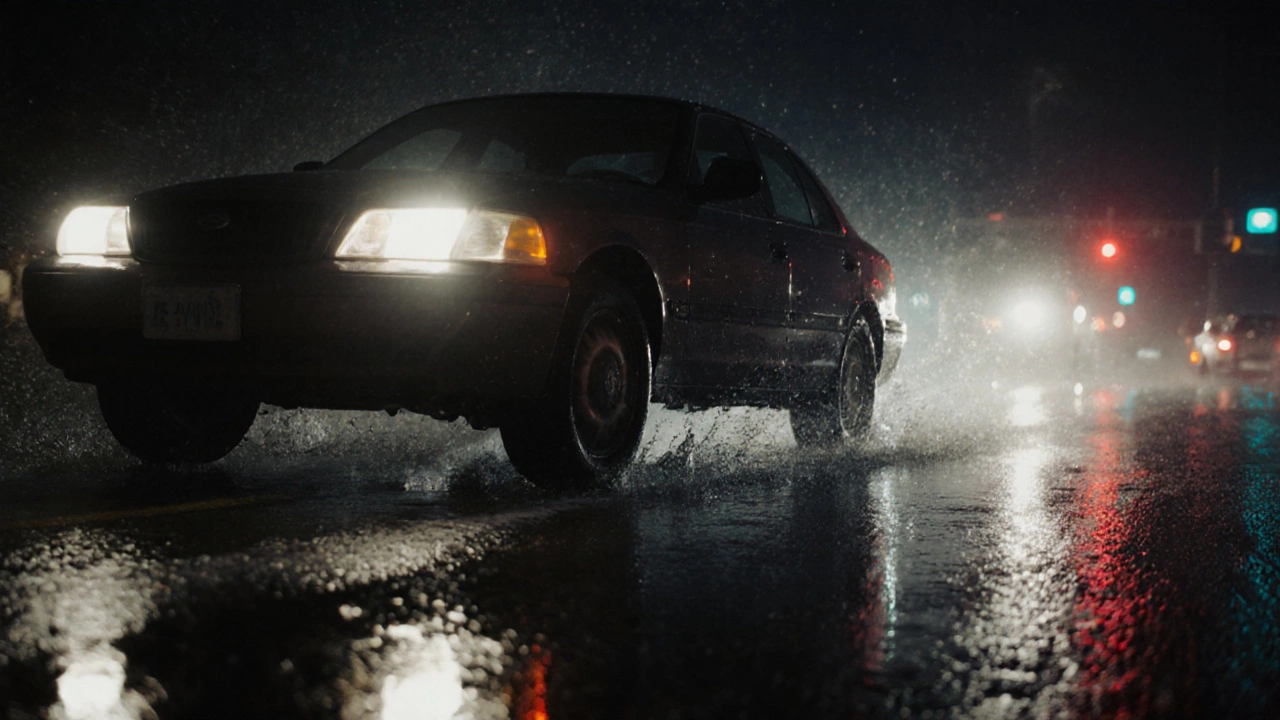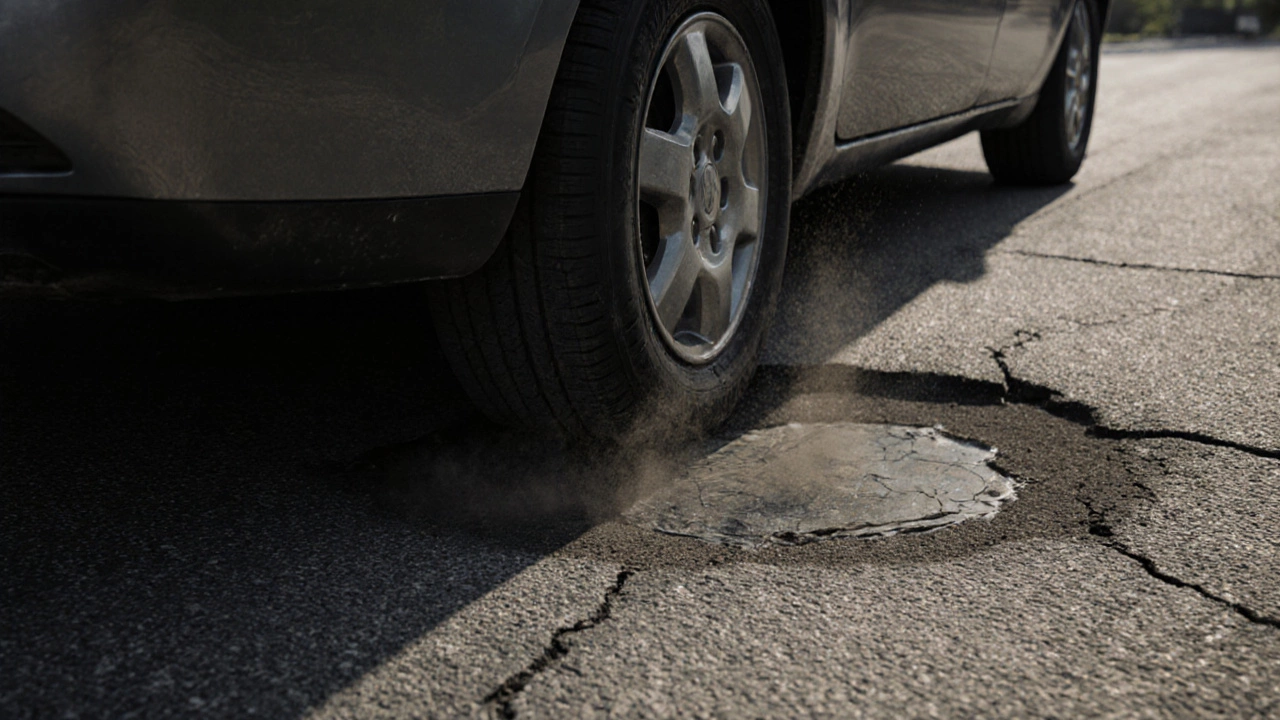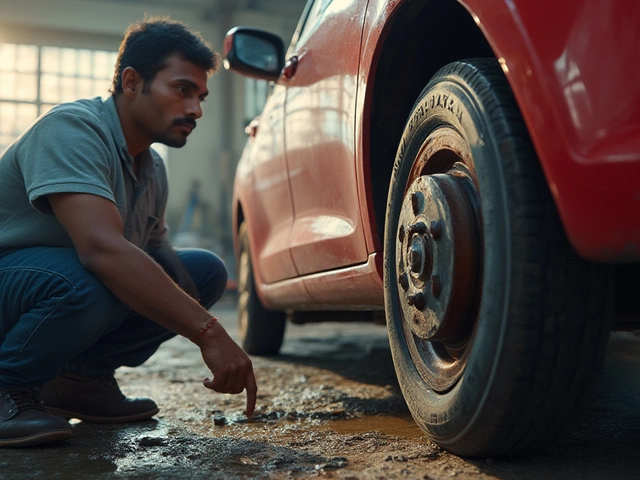Suspension Safety Risk Calculator
How Risky Is Your Driving?
Answer these questions to calculate your suspension safety risk level
Driving with a bent suspension isn’t just risky-it’s dangerous. You might think your car still rolls down the road, so it’s fine. But a bent suspension isn’t like a cracked wheel rim you can live with for a few weeks. It’s a hidden failure that gets worse every time you hit a bump, turn a corner, or brake hard.
What Happens When Your Suspension Is Bent?
Your suspension isn’t just there to make the ride smooth. It holds your tires in the right position so they grip the road properly. When a control arm, strut, or axle is bent-even slightly-it throws off the alignment. Your tires won’t sit flat on the pavement. Instead, they’ll tilt inward or outward, wearing out unevenly. You might notice your car pulling to one side, or the steering feeling loose or twitchy. That’s not just annoying-it’s a sign your tires are losing contact with the road.
Think about it this way: if your tires aren’t planted firmly, your brakes don’t work right. Your ABS system relies on consistent tire contact to prevent skidding. A bent suspension can cause one wheel to lift slightly during braking, which means your car might spin or veer off course when you need to stop fast. In 2023, the Australian Transport Safety Bureau reported that 17% of crashes involving vehicle component failure were linked to suspension damage. Most of those drivers had ignored early warning signs.
Signs You Have a Bent Suspension
You don’t need a mechanic to spot the red flags. Here’s what to look for:
- Your car pulls to one side when driving straight, even after an alignment
- Uneven tire wear-especially on one shoulder of the tire
- Clunking or knocking sounds when going over bumps
- The vehicle sits lower on one side
- Steering feels loose, vague, or overly stiff
- Your tires are wearing out way faster than they should
If you’ve hit a curb hard, taken a pothole at speed, or been in a minor fender bender, you’ve put stress on your suspension. Even if the damage isn’t obvious, it’s there. A bent control arm might look fine from the outside, but inside the metal, it’s stretched or cracked. That’s why visual checks aren’t enough.
Why Driving with a Bent Suspension Is a Bad Idea
Some people think, “It’s just a little bend. I’ll drive it until I can afford repairs.” That’s a gamble with your life and other people’s lives.
Here’s what actually happens when you keep driving:
- Tire failure: A bent suspension causes excessive heat buildup in the tire due to uneven contact. This can lead to blowouts, especially at highway speeds.
- Brake system overload: Your brake pads and rotors work harder to compensate for poor alignment, leading to premature wear and reduced stopping power.
- Steering component failure: The ball joints, tie rods, and bushings wear out faster under uneven stress. One of them could snap while you’re turning.
- Loss of control: In wet or icy conditions, a bent suspension makes your car unpredictable. It might fishtail, slide, or roll over in a sharp turn.
There’s no magic threshold where “it’s safe until X miles.” Suspension damage doesn’t heal. It only gets worse. A 2024 study by the RACV found that drivers who continued driving with known suspension damage were 3.5 times more likely to be involved in a crash within six months.

What to Do If You Suspect a Bent Suspension
If you’ve noticed any of the signs above, stop driving the car. Seriously. Even if it feels okay, the damage is already spreading.
Here’s what to do next:
- **Park safely.** Don’t drive it any further than absolutely necessary. If you’re on the side of the road, call for a tow.
- **Get a professional inspection.** A mechanic will lift the car and check the suspension components with precision tools. They’ll measure alignment angles, check for cracks, and test for play in joints.
- **Replace, don’t repair.** Bent metal parts can’t be straightened safely. Welding or hammering them back into shape might look fine, but the metal’s integrity is gone. Always replace bent control arms, struts, or axles with new OEM or certified aftermarket parts.
- **Get a full alignment.** After replacement, your car needs a four-wheel alignment. This ensures the tires are positioned correctly for safety and tire life.
Don’t fall for the myth that “it’s just a small bend.” Suspension parts are engineered to exact tolerances. A 2-millimeter bend can cause a 1.5-degree misalignment-which sounds small, but at 100 km/h, that’s enough to make your car drift into another lane.
Cost of Repair vs. Cost of Risk
Replacing a bent control arm in Australia typically costs between $400 and $800, depending on the car model and labor. That includes parts, alignment, and inspection. It’s a pain, but it’s predictable.
Now consider the alternative: a crash. Emergency medical bills, vehicle repair costs, insurance premium hikes, legal fees, lost wages, or worse-permanent injury or death. Insurance companies won’t cover you if they find you were driving with known, neglected damage. And in South Australia, you could face fines under the Road Traffic Act 1961 for operating a vehicle in an unsafe condition.
It’s not about being cheap. It’s about being smart. Fixing suspension damage early saves you thousands and keeps your family safe.

How to Prevent Suspension Damage
Prevention is cheaper than repair. Here’s how to protect your suspension:
- **Slow down over bumps and potholes.** Speed turns a small impact into major damage.
- **Check your tires regularly.** Uneven wear is often the first sign of suspension problems.
- **Get suspension checks during servicing.** Ask your mechanic to inspect bushings, joints, and alignment every 10,000 km.
- **Avoid overloading your vehicle.** Extra weight stresses suspension components beyond their design limits.
- **Replace worn shocks or struts on time.** They don’t last forever. Most last 80,000-100,000 km, but rough roads shorten that.
If you drive in Adelaide’s outer suburbs, where road conditions vary wildly, you’re at higher risk. Regular checks aren’t optional-they’re essential.
What About Temporary Fixes?
You’ll see videos online of people welding bent parts or using zip ties to hold things together. Don’t try this. Suspension components handle thousands of pounds of force every time you drive. Temporary fixes fail without warning.
There’s no safe shortcut. If your suspension is bent, it needs to be replaced. Period.
Can I drive a short distance with a bent suspension?
No. Even driving a few kilometers can cause further damage to your tires, brakes, and steering components. The risk of losing control increases with every bump or turn. It’s never worth the risk. Call a tow truck instead.
Will my insurance cover suspension damage from a pothole?
It depends on your policy. Comprehensive insurance usually covers damage from road hazards like potholes, but only if you weren’t driving recklessly. If you were speeding over a clearly visible pothole, your claim could be denied. Always drive cautiously on poor roads.
How do I know if my suspension is bent or just worn out?
Worn parts like bushings or ball joints feel loose and make noise, but they don’t change the alignment angles dramatically. A bent part will cause sudden, uneven alignment shifts. A professional alignment machine will show you the exact measurements-bent parts show up as extreme angles that can’t be corrected with adjustment alone.
Can a bent suspension cause my car to fail a roadworthy inspection?
Yes. In South Australia, a roadworthy inspection checks suspension integrity, alignment, and tire wear. A bent component will cause an automatic fail. You won’t be able to register your car until it’s repaired.
Is it cheaper to replace the whole strut assembly or just the bent part?
For most modern cars, replacing the entire strut assembly is more cost-effective and reliable. Struts are often sold as complete units because the spring, shock, and mount are designed to work together. Trying to replace just the lower arm or housing often leads to misalignment or future failure. The labor cost is similar, but the peace of mind is worth it.
Final Thought
Your suspension is the unsung hero of your car’s safety system. It’s not glamorous. You don’t see it. You don’t hear it-until it breaks. But when it fails, everything else fails with it. Don’t wait for the loud clunk or the tire blowout. If you suspect damage, act now. Drive safely, repair properly, and keep your family protected.




